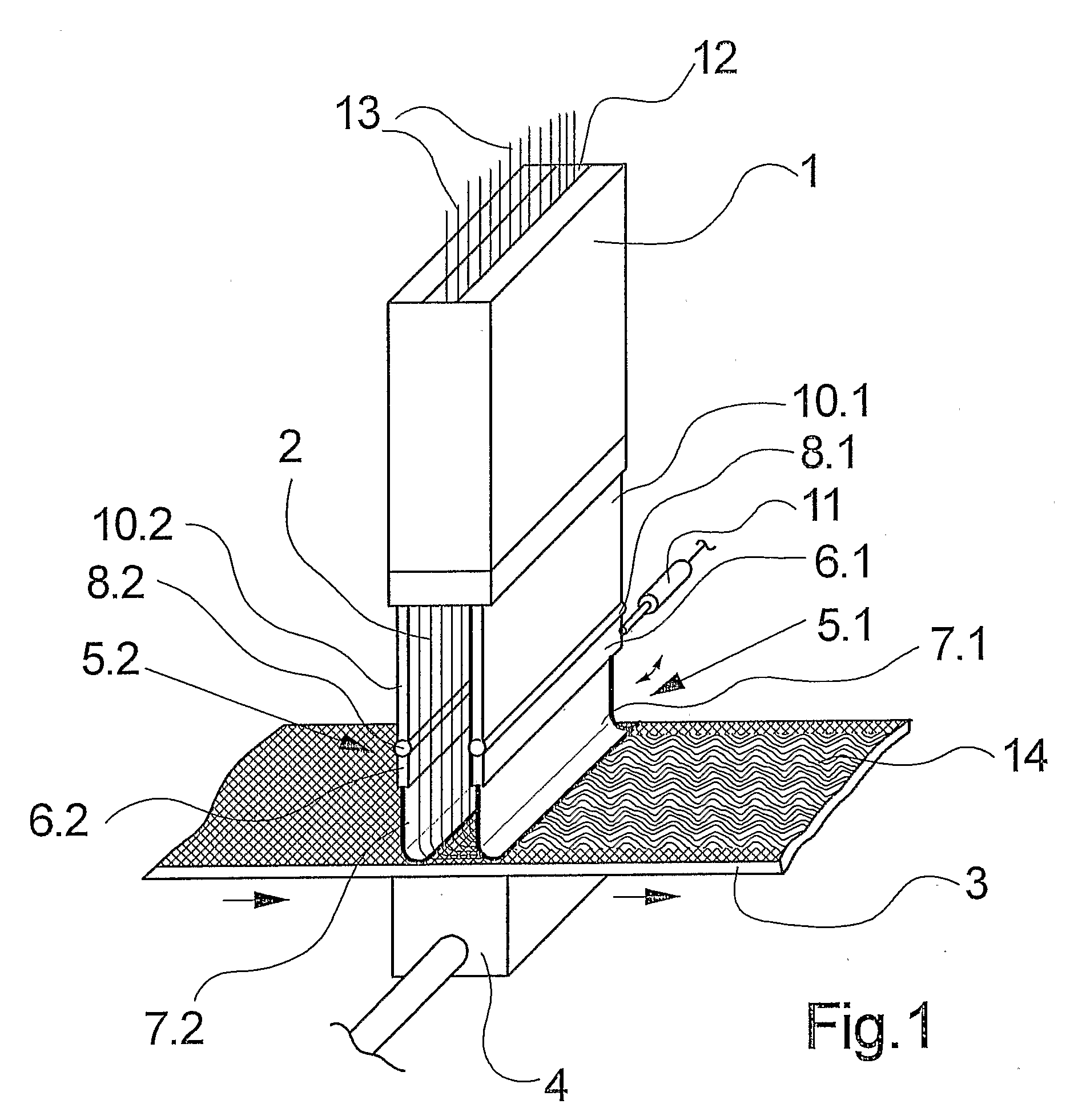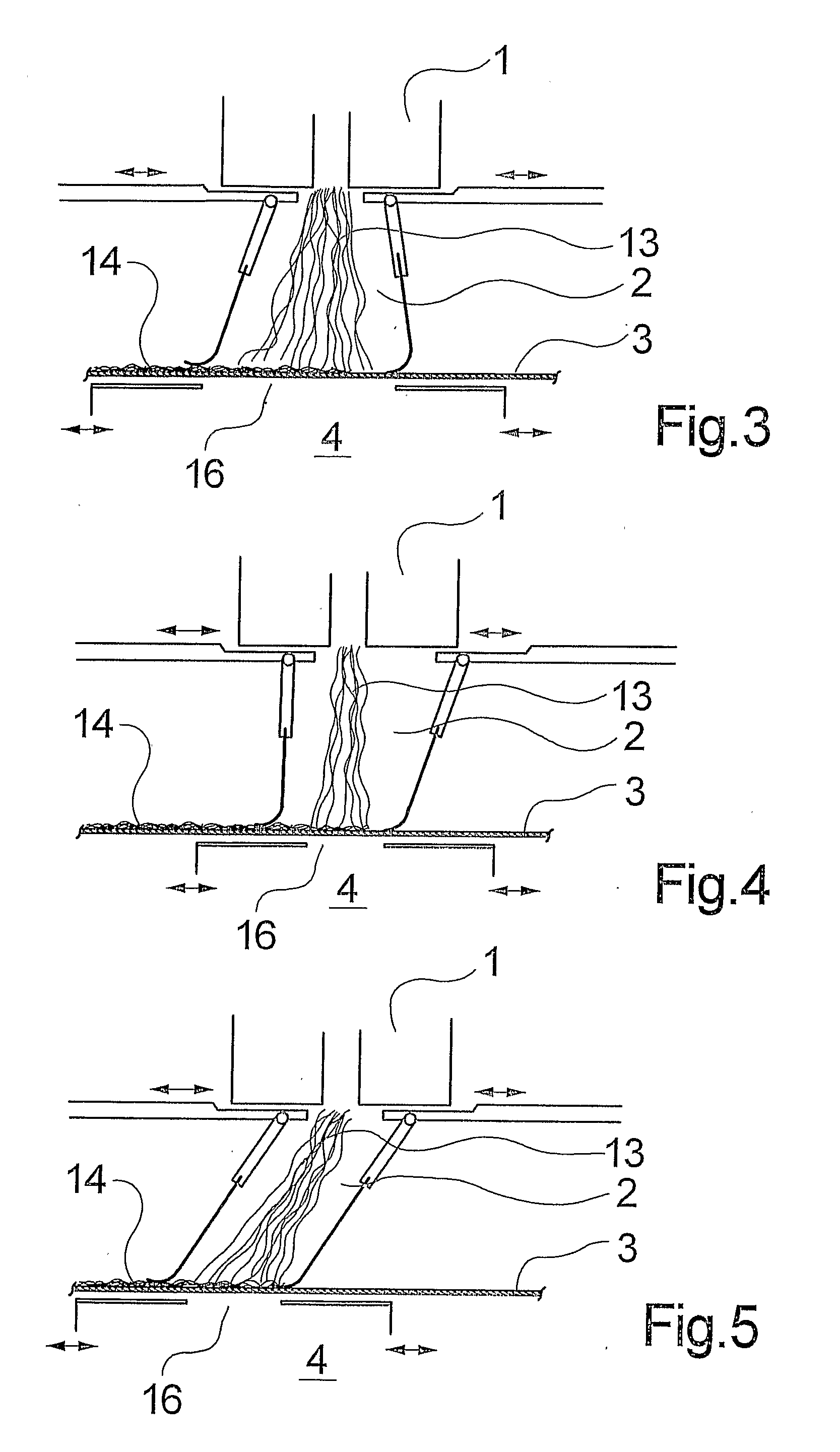Device for Stacking Synthetic Fibers to Form a Nonwoven
a technology of synthetic fibers and stacked fibers, which is applied in the direction of dough extruding machines, dough shaping, manufacturing tools, etc., can solve the problems of exhaust equipment sucking in a substantial portion of ambient air, increasing air consumption, and improving the flexibility of adjustability, so as to achieve the effect of implementing differences in heigh
- Summary
- Abstract
- Description
- Claims
- Application Information
AI Technical Summary
Benefits of technology
Problems solved by technology
Method used
Image
Examples
Embodiment Construction
[0030]The present invention now will be described more fully hereinafter with reference to the accompanying drawings, in which some, but not all embodiments of the invention are shown. Indeed, the present invention may be embodied in many different forms and should not be construed as limited to the embodiments set forth herein; rather, these embodiments are provided so that this disclosure will satisfy applicable legal requirements. Like numbers refer to like elements throughout.
[0031]FIG. 1 schematically shows a first exemplary embodiment of the device of the invention for depositing synthetic fibers to form a non-woven web.
[0032]The exemplary embodiment shown in FIG. 1 shows a parallelepiped take-off nozzle 1 with a central fiber channel 12. A plurality of fibers 13 is guided in a row in the fiber channel 12. The fibers 13 are spun previously by means of a spinneret (not shown) from a synthetic polymer melt.
[0033]Compressed air is supplied into the take-off nozzle 1 in the fiber ...
PUM
| Property | Measurement | Unit |
|---|---|---|
| thickness | aaaaa | aaaaa |
| height | aaaaa | aaaaa |
| area | aaaaa | aaaaa |
Abstract
Description
Claims
Application Information
 Login to View More
Login to View More - R&D
- Intellectual Property
- Life Sciences
- Materials
- Tech Scout
- Unparalleled Data Quality
- Higher Quality Content
- 60% Fewer Hallucinations
Browse by: Latest US Patents, China's latest patents, Technical Efficacy Thesaurus, Application Domain, Technology Topic, Popular Technical Reports.
© 2025 PatSnap. All rights reserved.Legal|Privacy policy|Modern Slavery Act Transparency Statement|Sitemap|About US| Contact US: help@patsnap.com



